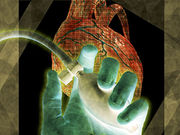Increase in fatal myocardial infarction in high-impact zone in 2011 continued through 2014
MONDAY, July 10, 2017 (HealthDay News) — The 2011 tsunami in Japan was associated with an increase in fatal myocardial infarction (MI) in the high-impact zone, which was sustained through 2014, according to a study published in the Aug. 1 issue of The American Journal of Cardiology.
Motoyuki Nakamura, M.D., from the Iwate Medical University in Morioka, Japan, and colleagues recorded the incidence of two types of cardiac events (fatal and nonfatal MI) following the 2011 Japan earthquake and tsunami. The study area was divided into two zones based on the severity of tsunami damage. In each zone the authors determined the standardized incidence ratio (SIR) for both types of cardiac events during the disaster year and post-disaster years.
The researchers found that in the four-year period after the disaster, there was no significant change in the SIRs for nonfatal MI in either zone. In the low-impact zone, the SIR was stable for fatal MI during the study period; the SIR was significantly elevated in the high-impact zone in the disaster year of 2011 (1.80); this increase was sustained for three years (2012, 2.06; 2013, 1.99; and 2014, 2.12).
“In conclusion, these results suggest that the devastating tsunami was associated with a continual increase in the incidence of fatal MI among disaster survivors,” the authors write.
Copyright © 2017 HealthDay. All rights reserved.








